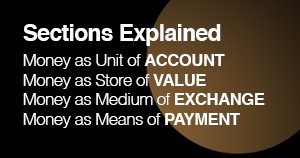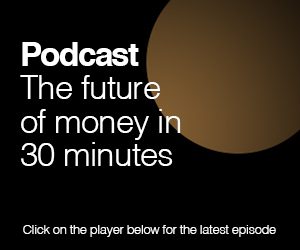By comparison with assets like gold, real estate and government bonds, the advantages of bitcoin as a store of value are that it is electronic, operates on a decentralised blockchain and is highly divisible into smaller units.
A house or a US Treasury bond are a great store of value, but you can’t just sell off a piece of either and keep the rest. Hence the attraction of bitcoin, which is often referred to as digital gold.
But what if you could digitise these more traditional stores of value and divide them into shares to be stored and sold on a blockchain?
What if there were new digital stores of value, new forms of digital gold? What would happen to bitcoin? These are the some of the questions raised by fractional non-fungible tokens (F-NFTs).
We are all rapidly becoming familiar with NFTs: these tokens are unique digital assets that sit on top of a cryptocurrency blockchain.
As unique tokens, NFTs have identification codes and metadata that distinguish them from others
In the case of the cryptocurrency ethereum, NFTs follow a technical standard called ERC-721. This standard is distinct from that for cryptocurrency tokens that are fungible (fungible means identical and interchangeable, so a fungible token is indistinguishable from any other of its type, like units of traditional currency).
Fungible tokens running on ethereum follow a different technical standard to NFTs, called ERC-20.
But as unique tokens, NFTs have identification codes and metadata that distinguish them from others.
This makes them ideal for representing distinct digital items such as artwork, music, tweets, and gaming assets. However, they can also be used to stand for physical items or assets like playing cards, paintings, and real estate. And, existing on a blockchain (which also tracks ownership), NFTs can be bought and sold peer-to-peer.
Fractional NFTs are relatively new to the cryptocurrency scene but their design principles were set out by Marc Howard in a seminal article published in November 2018.
According to Howard, a fractional NFT could allow multiple co-owners to share in the features and services offered by the token, while transactions in fractions of the NFT would not affect other fractional owners.
For example, a fractional NFT representing real estate could have multiple owners with each owner being able to buy and sell his or her shares at will. Or a character in a computer game could be co-owned, with multiple owners being able to use the character.
A fractionalisation of expensive assets, including real estate, would enhance their liquidity
Howard also argued that while F-NFTs were most applicable to virtual goods, they could easily be adapted to traditional investments, especially art and collectibles.
A fractional NFT would allow part-ownership of works of art whose prices were beyond the reach of a typical individual or collector. The validity of the ownership and authenticity of the shares would be recorded in smart contracts.
Such a fractionalisation of expensive assets, including real estate, would enhance their liquidity.
The owner of such an asset, instead of undergoing the time-consuming and often costly process of finding a single buyer, could fractionalise it and sell the lower-priced shares in a secondary market.
Buyers of these F-NFTs could also use them as assets in portfolio diversification. The only thing needed would be an exchange that could authenticate the asset, fractionalise it in a F-NFT and list it for sale.
By 2020, others were building upon these ideas. Some found individual NFTs to be too expensive for sole ownership or easy marketability. Put another way, they believed non-fungible tokens basically needed to be more fungible.
Following this idea, firms like NIFTEX and Polyient Games developed platforms to “shard” or “particle” existing NFTs into fungible (ERC-20) tokens that could be bought and sold or even added to pools.
NIFTEX also theorised a buyout clause for its F-NFTs. Working on the assumption that at some point someone would want total ownership of a fractionalised NFT, it believed that an option should exist to reassemble the NFT.
Through a buyout offer, a F-NFT owner could seek to acquire all outstanding fractions. If the price proved unacceptable, the offeror could instead be bought out by the other fractional owners.
A later entrant into the field, Fractional, approaches the problem through “NFT vaults.” Its platform also allows owners to fractionalise their NFTs by first creating a vault that takes custody of the NFT.
The NFT is then locked up, and the owner is issued all the fractions, which can be sold. A buyer can gain total ownership of the NFT by offering its reserve price. An auction then commences, and any profits from the sale are distributed to the F-NFT owners in exchange for their fractions.
bitcoin will no longer be the only game in town when it comes to storing long-term value
These initiatives have allowed fractional non-fungible tokens to be created for an increasing number of virtual assets. But what about physical assets?
So far, real estate investors have taken the lead in creating tokens that can be fractionalised. For example, a firm called Red Swan has begun the tokenisation and fractionalisation of $6 billion in real estate. Using security tokens (which follow the ‘ST-20’ standard on ethereum), investors are able to own and trade in shares of the properties.
And, given that fractionalised ownership of assets has existed in the more traditional investment world for some years, it should not take long before we see F-NFTs for everything from sneakers to fine art. This will create a new digital asset group.
Will this mean the end of bitcoin? That’s very unlikely. But it’s quite possible that more and more investors will add store of value F-NFTs to their portfolios along with bitcoin, seeking to diversify and turn a profit.
This will mean that bitcoin will no longer be the only game in town when it comes to storing long-term value. In other words, it will no longer be the only digital gold. What this will mean for the price of bitcoin remains to be seen.
Franklin Noll is a historian of the technology of money, from banknotes to cryptocurrency
Sign up here for the New Money Review newsletter
Click here for a full list of episodes of the New Money Review podcast: the future of money in 30 minutes
Related content from New Money Review
Ethereum network sees record congestion
St. Louis Fed highlights DeFi promise









